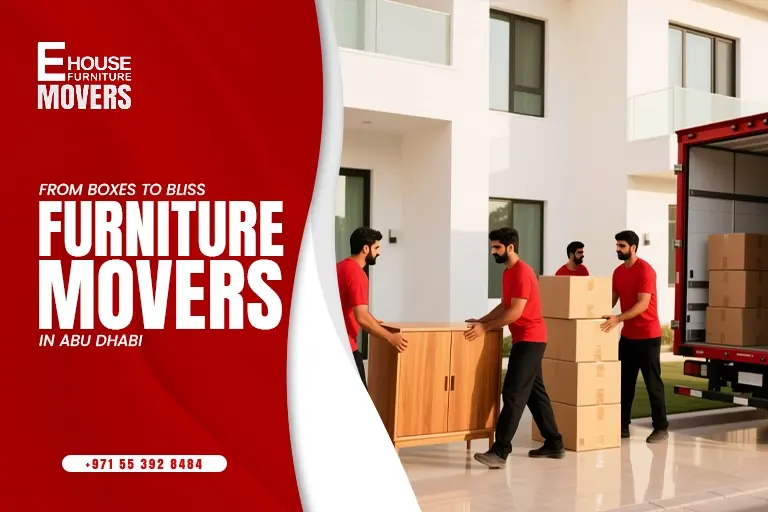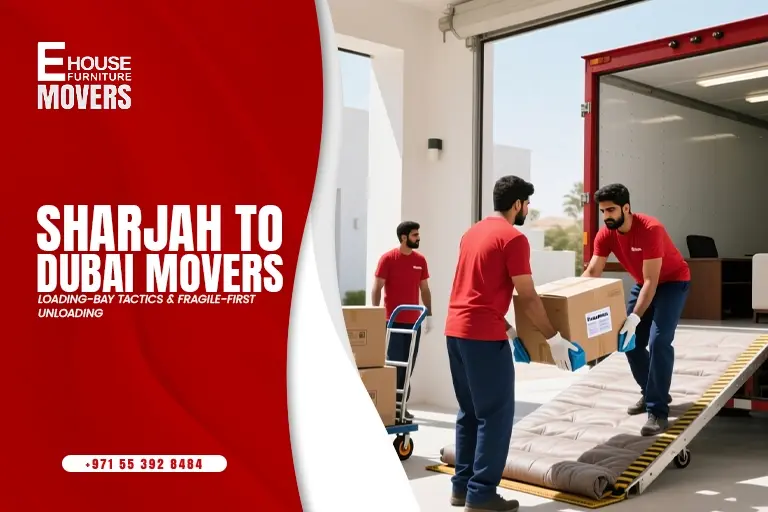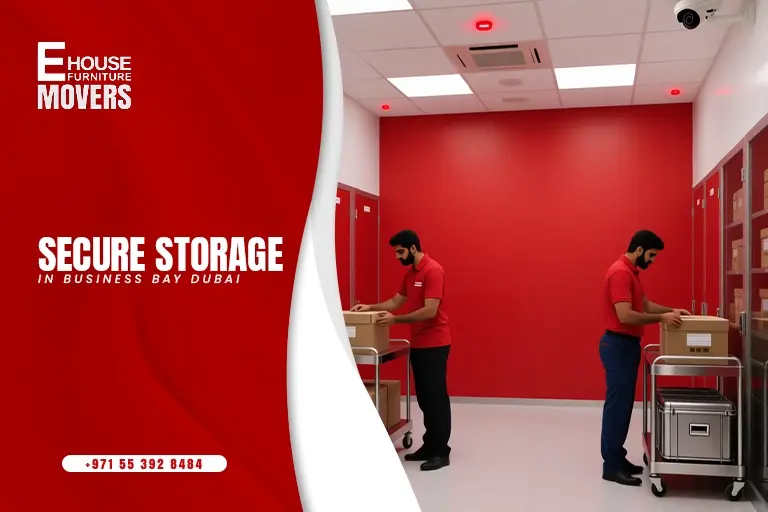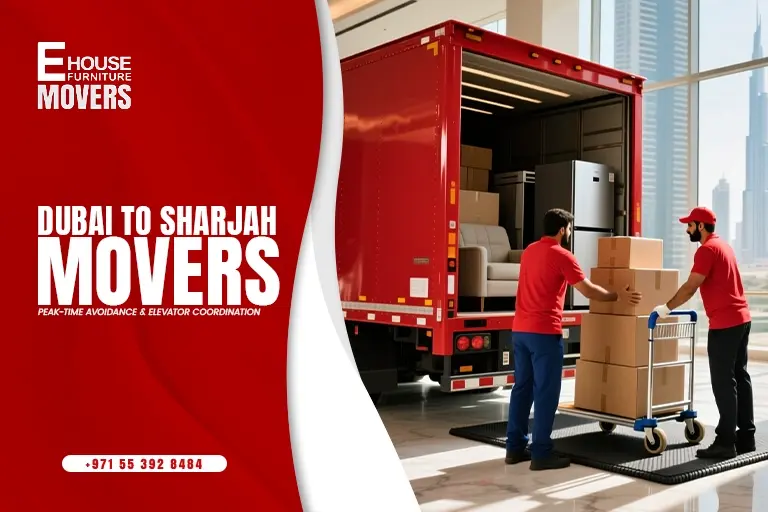Moving furniture in Abu Dhabi isn’t just about loading and unloading. It involves dealing with local rules (permits, NOCs), building access (service elevators, parking, carrying distances), climate (heat / humidity), insurance/liability, correct packing, disassembly and reassembly, and cost control.
Whether you choose local specialists or national companies, your move will benefit from working with experienced furniture movers UAE who understand both your specific needs and local regulations.
Working with dedicated furniture movers Abu Dhabi gives you the advantage of local knowledge and familiarity with building rules, permit procedures, and the day-to-day logistics in the city.
Also Read: Best Furniture Movers in UAE: Services, Costs, and Regulations
Understanding Building Permissions & Move-Out / Move-In NOCs
What is a Move-In / Move-Out Permit / NOC?
- Many residential buildings, towers, villas, or gated communities in Abu Dhabi require a formal No Objection Certificate (NOC) or move permit before moving large items or using service elevators/loading bays.
- The permit confirms the building management has approved your moving date/time, elevator use, truck access, and that any outstanding bills or dues have been settled.
- Without a valid permit, building security may refuse entry to the movers or trucks, causing delays and extra cost.
Tawtheeq & Legal Compliance
- In Abu Dhabi, Tawtheeq registration (registration of tenancy contract with the relevant authority) is central to building management and utilities. Without it, you may be blocked from getting an NOC or moving.
- Utilities (electricity, water etc.) activation, waste collection, and facility access may depend on valid tenancy registration and NOC approval.
- Delays or rejections may happen if documentation (Tawtheeq, bills, tenancy contract, landlord’s approvals) is missing or unpaid.
How and When to Apply
- Start the application for an NOC / permit well in advance — ideally at least 3-5 business days or more before the moving date.
- Submit necessary documents: tenancy contract, proof of identity (Emirates ID/passport), proof of cleared utility bills or maintenance dues, etc.
- Confirm with building management whether any special fees apply, or specific rules (time slots, elevator booking, parking, noise, community access, etc.).
Pre-Move Planning & Site Survey
Pre-Move Survey: Why it matters
- A professional mover should visit your current location and new location to assess the volume, size, type of furniture, shape of access routes (doorways, corridors, staircases, elevators), parking access, truck space, etc.
- This helps produce an accurate quote and avoids surprises on move day (items not fitting, extra labour, extra time).
- Some companies may offer virtual/video surveys if in-person isn’t possible, but in many cases a physical visit gives more accurate detail.
Inventory & Documentation
- Keep a detailed list of all furniture items being moved: sizes, condition, fragile vs sturdy, disassembly needs, etc.
- Photograph valuable or fragile items before packing — this helps if damage claims are needed later.
- Label screws, bolts, small parts from disassembling pieces, and keep them together in sealed & labelled bags.
- Clarify which services are included in the quote (packing, loading, transport, unloading, reassembly, insurance, small parts, parking, elevator fees, etc.).
Packing, Protection & Handling
Materials & Methods
- Use high-quality packing materials: bubble wrap, corner protectors, blankets, padded sheets, foam, strong cardboard, crates (if needed).
- Fragile or delicate surfaces (glass, mirrors, glass-table-tops, wardrobes, antiques, electronics) need extra cushioning and protection.
- Proper stacking in truck: heavier and bulky items first; fragile items on top or separately secured; ensure items are tied down or secured to prevent movement during transit.
- Label items and parts clearly, and mark which room each piece goes to in the new place to assist unpacking and placement.
Disassembly & Reassembly
- Movers should handle disassembly of large or awkward furniture (beds, wardrobes, sofas, wall units, etc.) when needed, and re-assemble at destination.
- Disassembly helps avoid damage and ensures items can be transported through narrow doorways or staircases.
- Confirm whether the disassembly and reassembly cost is included or extra; sometimes heavy or complex items attract additional charges.
- Proper care ensures your furniture is set up correctly and safely at the new location.
Transport, Logistics & Timing
Choosing the Right Vehicle & Crew
- The moving company should allocate vehicles and staff appropriate to the size and complexity of your move (number of items, distance, labour requirements).
- Vehicles should have protective interiors, be clean, well maintained, and suited for safe transport conditions.
- The crew should be experienced, trained in handling heavy or fragile items, and aware of proper loading, securing, and unloading techniques.
Scheduling & Timing
- Choose a date and time where building access is allowed, elevators are free, and moving regulations permit heavy items.
- Early morning or mid-morning may be less congested; avoid the worst heat of the day if possible.
- Consider weekday vs weekend — weekends can be busy; securing time slots and permits early helps.
- Confirm arrival time, approximate duration, number of labourers, number of trucks, and expected unloading time.
- For long‐distance or interstate/inter-emirate moves, factor in travel time, delays, traffic, rest stops, and legal driving limits if applicable.
Insurance, Liability & Damage Protection
Why Insurance / Coverage Is Important
- No matter how careful movers are, accidents can happen — damage, loss, wear, breakage. Insurance helps protect against financial loss.
- Verify whether your mover includes liability coverage or offers separate insurance; see what is covered (full replacement, partial damage, theft, water/fire damage, etc.).
- Understand the exclusions: what types of damage or loss might not be covered (pre-existing damage, normal wear and tear, misuse, inadequate packaging by client, etc.).
- Keep before-photos and after-photos, and detailed inventory, to present in case of any dispute or claim.
- Confirm in the contract what the process is to report damage, what deadlines apply, and what compensation may look like.
Cost Factors & Pricing Transparency
What Influences Cost
Here are the key cost components that will determine what you pay:
- Volume and size of furniture: number, weight, complexity
- Distance between pick-up and drop-off points
- Disassembly / reassembly work required
- Number of movers / labour hours needed
- Packing services (if you want full packing or partial packing)
- Packing materials used (quality, specialty materials for fragile items)
- Move-in / move-out permit fees, building NOC or elevator booking fees (if any)
- Insurance or liability coverage (if included or extra)
- Time of move (peak demand, weekend vs weekday, holiday season vs off-peak)
- Additional services (storage, trash removal, unpacking, special item handling, etc.)
Getting Accurate Quotes
- Always request detailed written quotes from at least two or more companies. The quote should clearly list what is included (packing, materials, transport, load/unload, disassembly, reassembly, damage coverage, etc.) and what is extra.
- Be wary of quotes that are very low and vague — hidden charges may appear on move day if the scope isn’t clearly defined.
- Ask the mover about any extra charges that may arise: narrow hallway carries, stairs, long carry (distance from truck to door), parking fees, elevator wait time, overtime.
- Compare not only cost but also what services are offered for that cost. Sometimes paying a bit more for a full-service, insured, professionally handled move saves you stress and potential damage costs.
Best Time to Move & Seasonal Considerations
- Abu Dhabi is hot for much of the year; extreme heat may stress both搬家 staff and furniture (especially delicate items). Plan to avoid the worst midday heat if possible.
- Moving during off-peak times or non-holiday periods may offer better availability and possibly lower prices.
- Building management, parking, and logistics may be easier to arrange on non-busy days; avoid last-minute scheduling to secure your preferred slots.
- Ensure all paperwork, NOC, Tawtheeq, utilities, clearances are done ahead of time to avoid last-minute delays.
You Can Also Read: Home Movers in the UAE: From Pre-Move Survey to Final Setup
Client Checklist: What You Must Do
Here’s a practical checklist to ensure your move goes smoothly:
- Declutter: decide what to keep, donate, discard. Less to move = lower cost and less work.
- Take inventory and photograph your items, especially fragile or valuable ones.
- Measure your furniture and your destination’s access points (doorways, elevators, stairways, corridors) to check fit.
- Check your building’s requirements: permit, NOC, elevator booking, parking, moving hours, rules.
- Clear all utility bills, service charges, maintenance dues before applying for NOC (if required).
- Book your mover well in advance; confirm details (crew size, truck size, timing, cost, what is included, insurance, disassembly/reassembly etc.).
- Pack or request packing; ensure proper protection for fragile items.
- Be present (or designate someone) on move day to check items, supervise handling, confirm delivery, check condition, sign off.
- Inspect items immediately on arrival for damage or missing parts (especially small fittings). Take photos if any issue.
- Keep all documentation: contract, inventory, photos, NOC, payment receipt, mover contact.
Frequently Asked Questions (FAQ)
Do I always need a building NOC / move-permit even if I’m moving within the same building?
What happens if I don’t get a move permit?
Does used furniture imported from overseas attract customs duty in the UAE?
Generally, used personal household goods may be exempt, but proper documentation (proof of use, inventory lists, etc.) may be required. It depends on customs rules. Verify with relevant authorities.
Can I move items myself without hiring a professional furniture mover?
Yes, but DIY often involves hidden costs: hiring trucks, labour, packing materials, tools, insurance, transportation time, physical strain, risk of damage etc. Especially for bulky or fragile items, professional movers offer value, safety, insurance, and efficiency.
Is it cheaper to move outside peak times?
Often yes. Off-peak times, weekdays, or early bookings can reduce costs and improve availability. But the final cost depends on your service scope, distance, packing, and additional requirements.




